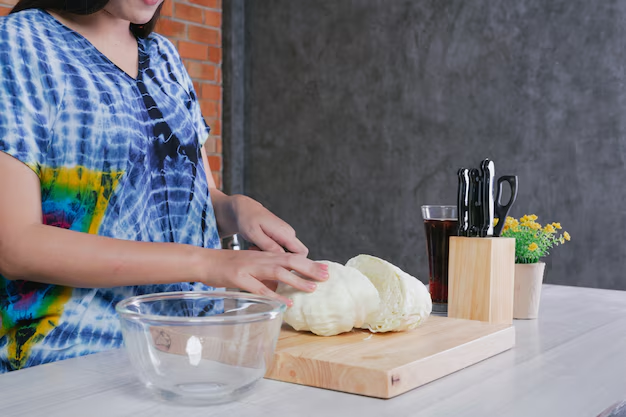Should You Store Garlic in the Refrigerator? A Comprehensive Guide to Garlic Storage
Garlic, with its distinctive aroma and flavor, is a staple in kitchens around the world. But when it comes to storing garlic, the question often arises: Should garlic be stored in the refrigerator? Understanding the best storage methods ensures that your garlic remains fresh and flavorful for as long as possible. This guide explores whether refrigeration is beneficial or detrimental to garlic, along with various storage best practices to maximize its shelf life.
Understanding Garlic and Its Key Properties
What Makes Garlic Unique?
Garlic belongs to the Allium family, closely related to onions, leeks, and chives. This small, bulbous plant contains numerous beneficial compounds, such as allicin, which contributes to its health benefits and distinctive smell. The structure of garlic, consisting of multiple cloves, lends itself to a range of culinary applications. Garlic's robust flavors enrich countless dishes, but preserving those flavors depends largely on how the garlic is stored.
Factors Influencing Garlic's Shelf Life
Several factors can affect how long garlic remains fresh, including temperature, humidity, and light exposure. Understanding these factors is crucial to determining when refrigeration might be appropriate.
- Temperature: Garlic prefers cool, dry environments.
- Humidity: High humidity levels can cause garlic to sprout or become moldy.
- Light Exposure: Exposure to light can diminish garlic's flavor and freshness over time.
Pros and Cons of Storing Garlic in the Refrigerator
Before deciding to refrigerate garlic, consider the benefits and drawbacks.
Pros of Refrigerating Garlic
- Extended Shelf Life in Certain Conditions: If garlic is already peeled or chopped, refrigeration can help prevent spoilage.
- Convenience: Refrigerated garlic cloves are ready to use when needed without peeling.
Cons of Refrigerating Garlic
- Increased Risk of Sprouting: Garlic stored in the fridge can begin to sprout prematurely.
- Change in Texture: Refrigeration can cause garlic to become rubbery.
- Flavor Loss: Garlic’s robust flavor may diminish over time when kept at low temperatures.
Optimal Ways to Store Garlic
Whole Bulbs
Preferred Method: Store whole garlic bulbs in a cool, dry place with good air circulation. A pantry or a dark cupboard is ideal.
Tips:
- Keep garlic bulbs in a mesh bag or a paper bag to facilitate airflow.
- Avoid storing garlic in plastic bags, as they can retain moisture and encourage mold growth.
Individual Cloves
For individual garlic cloves, options vary based on whether they’re peeled or unpeeled.
Unpeeled Cloves
Preferred Method: Store in a similar manner to whole bulbs but use them more quickly as unpeeled cloves don’t last as long.
Peeled Cloves
Preferred Method: Store peeled cloves in the refrigerator in an airtight container for short-term storage.
Tips:
- Use peeled cloves within a week to prevent spoilage.
- Consider storing them covered in olive oil to maintain moisture and flavor.
Minced or Chopped Garlic
Preferred Method: Store in the refrigerator encased in oil or freeze for extended storage.
Tips:
- Using a sealed container prevents garlic's strong odor from affecting other refrigerated items.
- When freezing, spread garlic on a baking sheet before transferring to a freezer bag to ensure easy use when needed.
Practical Garlic Storage Tips and Health Considerations
- Avoid Confusing Mold with Blooming: Sometimes garlic may have a powdery substance known as "bloom," usually harmless and different from mold.
- Proper Drying: After harvest or purchase, curing or drying helps extend shelf life. Allow garlic to hang in a dry, ventilated space for a few weeks.
- Pay Attention to Smell and Texture: Fresh garlic has a strong fragrance and feels firm to the touch.
🚀 Quick Reference Summary
- Whole Garlic: Store in a cool, dry place for up to several months.
- Peeled Cloves: Refrigerate in an airtight container; use within a week.
- Chopped/Minced: Refrigerate short-term in oil, or freeze for long-term use.
- Avoid Refrigeration for Whole Bulbs: Prevents sprouting and maintains flavor.
Exploring Related Topics in Garlic Storage
Shelf Life of Garlic-Based Products
In addition to fresh garlic, consider garlic-infused oils or powders. Each has unique storage needs to preserve its quality.
Garlic Preserving Techniques
From fermenting to dehydrating, multiple methods allow for long-term storage of garlic, each adding unique flavors to cuisines. Understanding these techniques can help further extend garlic’s utility.
Different Garlic Varieties and Storage Needs
Softneck and hardneck garlic, the two primary types, may have different storage behaviors. While softneck garlic typically has a longer shelf-life, hardneck varieties can offer superior flavor over time if stored correctly.
Key Takeaway
Ultimately, whether to store garlic in the refrigerator comes down to individual needs and how quickly the garlic is expected to be used. Whole, unpeeled bulbs fare best in a dry, dark, and room temperature environment, whereas peeled or chopped garlic finds its home in the fridge or freezer for more immediate use. By understanding these key differences and storage methods, you can maintain the quality and flavor of your garlic for all culinary adventures.
